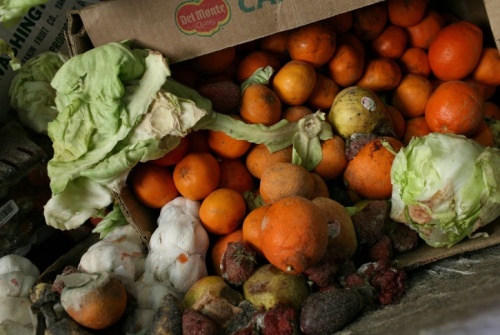If you’ve studied Japanese, one thing you may have puzzled over is why some things earn the honorific prefix “o-” or “go-”, while other equally (or even more) noble things don’t. Why are beer and telephones (o-biru and o-denwa) worthy of honour, while wine and computers are not? It is a mystery.
Traditional foods often earn honorifics in Japanese, even humble ones like “o-kara” – a byproduct of the tofu making process. “Kara” literally means husk or shell, and okara is the pulp that you filter out of the soybean slurry to get soy milk. Anyone could be forgiven for not seeing what’s so honourable about it; it’s bland, and not known to make anyone’s mouth water (though one of our cats seems to like the smell).
That being said, okara does have some redeeming properties. It’s high in fiber, as you’d expect, and contains protein, calcium, iron, and riboflavin. It’s flexible. And, although it goes bad very quickly, it freezes nicely, so you can store it until you need it.
The Japanese have long understood that okara is a valuable food, not to be thrown away. There, it’s often served as a side dish, unohana, made with okara, vegetables, sugar, soy and sake. Unohana is served cold – and I ate it for years thinking it was made with tofu. It’s only when I moved to the United States and started making tofu that I realized what okara was, and had to start figuring out ways to use it (as every litre of soy milk generates about a cup of okara, and we weren’t about to throw it out).
So, for those of you who might be struggling to use up all the okara you generate, and who regularly throw some away, here are a few of the experiments we’ve tried, with varying levels of success:
Okara falafel: We found this recipe online last week and tried it out with a few changes. We added a bit more flour to give the mixture the consistency of drop biscuit batter, threw in some cayenne pepper, and used cilantro rather than parsley. The result was so good that we served it to guests recently (with some tahini, lemon and garlic sauce). Everyone enjoyed it, and was surprised to find out what they were eating. The “falafel” was dense, flavourful, and moist with a crispy crust. Simply amazing.


Baking: Many people use okara in baking, and it gives breads body and moisture. Bonnie Lee used okara in the pumpkin bread I blogged about a few weeks ago. This was another huge success.

Stealth okara: This isn’t one dish, but rather a class of dishes. Okara has the texture of porridge, and, being bland, can be mixed into a number of foods without significantly changing their flavour or texture. This includes things like mashed potatoes, actual porridge and polenta. Okara is almost undetectable in mashed potatoes and porridge (when it makes up about 25% of the volume). Okara made the polenta I tried creamier (I used ¼ cup corn meal, 2 cups water, and ¾ cups okara) – though I found that it set less well, and wasn’t suitable for slicing and frying the next day. These stealth applications are a great way to use up okara.


Vegan pancakes: I haven’t experimented with this much, but did make one batch of my usual recipe substituting buttermilk with soy milk, and the eggs with okara. These ended up being heavy, but tasty enough. I use a mix of baking powder and baking soda, so a little dash of vinegar will help lighten them up next time.

Soups & eggs: We’ve added okara to a few soups and to omlettes. It can add a little grittiness to those if you overdo to okara, but we’ve had a few moderate successes there. More experimenting needed here.

Things we have yet to try: If you make tofu at home, I strongly suggest that you get The Book of Tofu, which has many ideas to springboard off of, including: okara soufflés, croquettes, chapaties, granola and a variety of baked goods.












 You may have noticed that I don’t post a weekend roundup every week. When I don’t post, it’s usually because I haven’t found enough articles or videos that have something new to say about food-waste-related issues. Most of this week’s articles are ones that I wouldn’t usually post, but what I found interesting this week was the sheer number of articles that have been published on the topic. In my
You may have noticed that I don’t post a weekend roundup every week. When I don’t post, it’s usually because I haven’t found enough articles or videos that have something new to say about food-waste-related issues. Most of this week’s articles are ones that I wouldn’t usually post, but what I found interesting this week was the sheer number of articles that have been published on the topic. In my 





